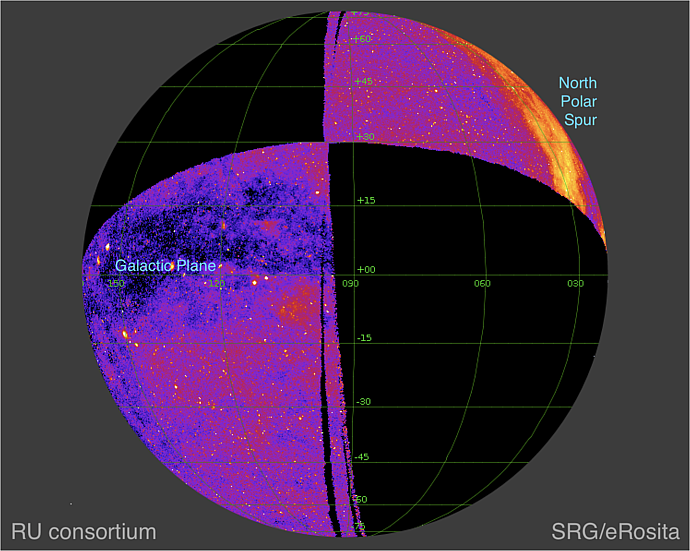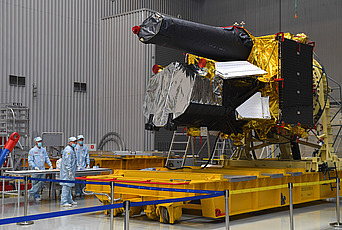
SRG X-Ray Observatory Surveys Half the Sky
Occupying a region of space (L2) four times more distant than the moon, the SRG observatory is busily rendering an X-ray map of the universe and has officially reached the half-way mark of its first all-sky survey, which began in December and is expected to be completed by June 2020. Rashid Sunyaev, Maureen and John Hendricks Distinguished Visiting Professor in the School of Natural Sciences, is the Russian Scientific Head of the Spectrum-Roentgen-Gamma (SRG) mission.
Over the next four years, the SRG observatory, equipped with two independent X-ray telescopes—German-built eRosita and Russian ART-XC—will produce eight all-sky surveys, increasing the sensitivity of current X-ray maps by 20 to 30 times.
The X-ray signature of the universe provides insight into some of the most energetic regions of space, from the most powerful star-forming region in our galaxy, known as Cygnus X, to active galactic nuclei and quasars set ablaze by supermassive blackholes billions of light years away.
“Have you seen your body in X-rays? It looks completely different,” said Sunyaev, speaking with Nature shortly before the observatory launch on July 13, 2019. “We will do the same with the universe.”
More than 125,000 X-ray sources, including thousands of clusters of galaxies filled mainly with mysterious dark matter, have already been detected on the quarter of the sky that the Russian consortium is responsible for processing and analyzing.
The X-ray map also reveals many thousands of stars with active coronae (much more luminous in X-rays than the sun’s corona), remnants of supernova explosions, pulsars, accreting white dwarfs, and many other types of galactic X-ray sources.


